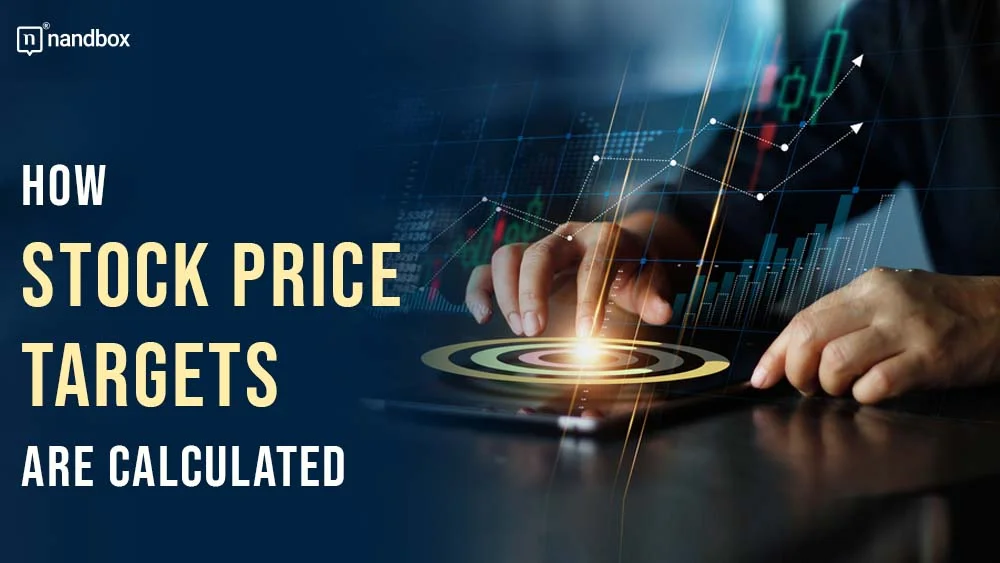In the world of investing, stock price targets play a crucial role in guiding investors’ decisions. These targets represent the expected future price of a stock based on various factors. They include company performance, market trends, and economic indicators. Investors rely on these targets to assess the potential return on investment and make informed decisions about buying, selling, or holding stocks. In this article we’re going to touch on how to calculate stock price target.
Importance of Stock Price Targets
Stock targets provide investors with valuable insights into the perceived value of a company’s stock. They serve as benchmarks for evaluating the performance of a stock relative to its expected future value. By comparing the current market price to the target price, investors can gauge whether a stock is undervalued, overvalued, or fairly valued. This helps them make strategic investment decisions.
Role of Analysts and Algorithms
Traditionally, financial analysts who conducted in-depth research and analysis of businesses and industries were primarily responsible for determining price targets. However, with advancements in technology, algorithms, and predictive models have become increasingly important to know how to calculate stock price target. These algorithms analyze vast amounts of data, including financial statements, market trends, and investor sentiment. They help generate forecasts with greater speed and accuracy.
The Analyst Approach to Stock Price Targets
Financial analysts play a pivotal role in estimating price targets through a rigorous analytical process. These professionals utilize various methodologies and tools to assess the intrinsic value of a company’s stock and predict its future performance.
Fundamental Analysis
Fundamental analysis involves evaluating a company’s financial health, business model, industry position, and economic outlook to determine its intrinsic value. Analysts analyze factors such as revenue growth, dividends declared, earnings potential, cash flow, and competitive advantages. These can assess the long-term prospects of the company and derive a target price based on its fundamentals.
Technical Analysis
Technical analysis focuses on studying past market data, such as price movements and trading volume, to forecast future price trends. Analysts use various chart patterns, indicators, and statistical tools to identify support and resistance levels. In addition, they identify trends and potential entry and exit points for a stock. While technical analysis may not consider the underlying fundamentals of a company, it provides valuable insights into investor behavior and market psychology.
The Role of Algorithms in the Process of how to Calculate Stock Price Target
In recent years, algorithms have revolutionized the process of calculating stock price targets. This is achieved by leveraging advanced mathematical models and machine learning algorithms to analyze vast amounts of data and identify patterns and trends that human analysts may overlook.
Machine Learning Models
Machine learning algorithms, such as neural networks and decision trees, are trained on historical market data to identify complex relationships and patterns that can predict future stock price movements. These models continuously learn and adapt to new information, enabling them to improve their accuracy over time.
Sentiment Analysis
Sentiment analysis algorithms analyze news articles, social media posts, and other textual data to gauge investor sentiment and market sentiment toward a particular stock or company. By tracking positive or negative sentiment indicators, these algorithms can assess the impact of news events, earnings reports, and other factors on stock prices.
Factors Influencing Stock Price Targets
Several factors influence the calculation of price targets, ranging from macroeconomic indicators to company-specific variables. Understanding these factors is essential for investors to interpret and evaluate stock targets accurately.
Macroeconomic Environment
The overall economic conditions, such as GDP growth, inflation rates, interest rates, and geopolitical events, can significantly impact stock prices and market sentiment. Analysts and algorithms incorporate macroeconomic forecasts and indicators into their models to assess the broader market outlook and adjust their stock price targets accordingly.
Company Performance
The financial performance and outlook of a company are critical determinants of its stock price target. Factors such as revenue growth, profit margins, earnings per share, and debt levels influence analysts’ assessments of a company’s intrinsic value and growth prospects. Algorithms analyze historical financial data and forecast future earnings to estimate the fair value of a company’s stock.
Challenges and Limitations
While stock targets provide valuable guidance to investors, they are not without limitations and challenges. It’s essential to be aware of these factors when interpreting and relying on stock price for investment decisions.
Market Volatility
The stock market is inherently volatile, and prices can fluctuate rapidly in response to news events, economic indicators, and investor sentiment. Sudden market movements can render price targets obsolete or inaccurate, making it challenging for investors to rely solely on target prices for decision-making.
Uncertainty and Complexity
Predicting future stock prices is inherently uncertain and complex due to the myriad of factors that can influence market dynamics. While analysts and algorithms use sophisticated models and methodologies, there are inherent limitations to forecasting accuracy, particularly in highly volatile or unpredictable market conditions.
Best Practices for Using Stock Price Targets
To effectively utilize stock targets in investment decision-making, investors should follow best practices and consider a range of factors beyond just the target price itself.
Conduct Due Diligence
Before relying on a stock price target, investors should conduct their own research and due diligence on the company, its industry, and market conditions. This includes analyzing financial statements, industry reports, and regulatory filings to gain a comprehensive understanding of the investment opportunity.
Diversification and Risk Management
Diversification is key to managing investment risk and mitigating the impact of individual stock price movements on a portfolio. Investors should diversify their holdings across different asset classes, industries, and geographic regions to reduce concentration risk and enhance long-term returns.
Case Study: Analyzing Stock Price Targets
To illustrate how stock targets are calculated and utilized in practice, let’s consider a hypothetical case study of a technology company, Tech Innovations Inc. (TI).
Company Overview
Tech Innovations Inc. is a leading provider of innovative software solutions for businesses across various industries. The company has experienced rapid revenue growth and profitability in recent years, driven by strong demand for its products and services.
Stock Price Target Analysis
Financial analysts have conducted a thorough analysis of Tech Innovations Inc.’s financial performance, industry trends, and competitive landscape to derive a stock price target. Based on their assessment, the analysts have set a target price of $150 per share. This represents a 20% upside potential from the current market price.
Future Trends in Stock Target Advisor
As technology continues to advance, we can expect to see further innovations in stock target advisor tools and methodologies. From the integration of artificial intelligence and machine learning algorithms to the incorporation of alternative data sources and predictive analytics, the future of stock advisors holds exciting
Conclusion
Stock price targets play a vital role in guiding investors’ decisions and assessing a stock’s potential value. These targets, whether determined by financial analysts or algorithms, offer useful information about the anticipated future performance of a company’s stock. However, it’s essential to consider the limitations and uncertainties inherent in stock price forecasting and supplement target prices with thorough research and analysis.







